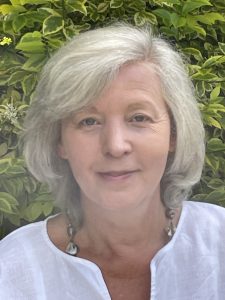 In your research you employ a pedagogical focus on noticing on patterns, properties and structure reflected in mathematics tasks. In what way did this focus shape the approach to analysis of the data captured of the pupils modelling, their conversations, their facial expressions and other reactions?
In your research you employ a pedagogical focus on noticing on patterns, properties and structure reflected in mathematics tasks. In what way did this focus shape the approach to analysis of the data captured of the pupils modelling, their conversations, their facial expressions and other reactions?
The pedagogical focus on noticing was crucial in and entirely underpinned my approach to data analysis. It injected no small measure of complexity since noticing is an internal process – we cannot observe what others notice; we can only observe their response to what they notice. So, my analysis focused on the visible responses in pupils’ speech, gesture, expression and action and used these to infer what had been noticed. In practice, gesture was often accompanied by speech, or gesture at one point in the video sequence that might indicate a particular noticing was later confirmed by speech, and so it was usually possible to trace the development of children’s awareness and noticing of mathematical ideas. The process was time consuming, requiring multiple viewings of sections of video recordings.
What would you like to see change in terms of addressing teacher perceptions about the capabilities of all learners of mathematics?
An answer to this has many layers because perceptions of pupils’ capabilities are inextricably linked with what is valued mathematically both in our curriculum and more broadly in society. If mathematics continues to be viewed as a subject of right answers where speed of recall is equated with capability then change in perceptions is challenging. I think it has to start with a recognition that all pupils, all people, can and do think and behave mathematically – and then working at ways of enabling mathematics in schools to more frequently appeal to what everyone can do – notice, spot patterns, identify same and different. I draw much of my thinking on this from the work of Gattegno, John Mason and others. I have always liked the chapter ‘Learners’ powers’ in John Mason and Sue Johnstone-Wilders’ Fundamental Constructs in Mathematics Education, because it paints a vivid picture of children’s natural mathematical behaviours and accomplishments. This has often provided food for thought.
In what ways do you envisage the findings from your research being used in initial teacher education to assist beginning teachers with knowledge about the importance of directing pupils’ attention towards recognizing and reasoning about patterns and relationships with number? (or patterns and structures more generally).
Recognising and reasoning about pattern and number is crucial because it is through this that confidence in number emerges. If you understand how numbers or ideas are connected, how they are organised, it puts you in charge and you feel more confident to work with these numbers or ideas flexibly. But I think its important also to realise that it isn’t enough that there is a pattern available for noticing – we also need to help children to look and to look in productive ways. So, I’d hope that this particular paper may be used with ITE students to explore ways of opening up opportunities for mathematical noticing, but there are also broader applications and links to be made. For example, I think there are links to be drawn with mathematics mastery materials which, through applications of variation theory, also aim to draw children’s attention to pattern and generality; there are definitely some useful links there though this was not what my research was about.
How has receiving the Janet Duffin Award been personally significant for you?
It has been a delight. A real boost to my confidence and something that I will always be extremely proud of and grateful for. It is very special to have an award from the BSRLM community – it’s such a special group of people.